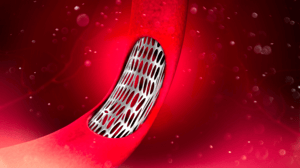Experiments have taken place at the University of Waterloo (Canada) with a sugar extracted from marine plants, which allows the inner walls of artificial bypasses to behave like natural ones.
Bypasses used to surgically replace parts of blood vessels (in particular coronary arteries) damaged by a heart attack, occlusions or other diseases, may become even more efficient in the future, thanks to a combination of nanotechnology and, above all, a complex sugar extracted from algae, with properties that appear extremely useful.
The molecule in question is called fucoidan. It has a chemical structure like that of the anticoagulant heparin and this feature could significantly help increase the success in bypasses performed with artificial vessels.
Usually, when a bypass is performed, a surgeon attempts to remove a patient's own blood vessel and transplant it where needed. However, this is often not possible, especially when the bypass involves the smallest vessels, which have diameters of just a few millimetres. In these cases, synthetic vessels made from plastic polymers are used. However, these have several disadvantages. The first is that once inserted they do not encourage epithelial cells (which usually line blood vessels) to take root inside them, thus increasing the risk of new thromboses forming.
Strengthening natural 'adhesives'
However, as researchers at the University of Waterloo (Canada) have shown in an article published in the scientific journal Bioactive Materials, if the inner surface of the artificial vessel is covered with nanoparticles of fucoidan, distributed according to a technique called micropatterning (which promotes the homogeneous distribution of the molecule) things are very different.
Fucoidan stimulates the adhesion of epithelial cells to the polymer and therefore helps form a layer that makes blood circulation more fluid, with less risk of new thromboses. This happens because fucoidan attracts natural 'adhesives' with these special functions, like fibronectin molecules and integrins, and this, in turn, activates certain metabolic circuits that help synthetic vessels behave very much like natural blood vessels.
Researchers carried out many kinds of laboratory tests, which yielded the same result each time, confirming that fucoidan not only stimulates the formation of the endothelium (the inner layer of normal blood vessels), but also does not cause inflammation, and is therefore presumably safe (as other studies have already shown).
From experiments to testing
Canadian engineers then tested how effective fucoidan-coated vessels were in the carotids of animals who were operated on with this experimental technique.
The experiment led to an important result: by comparing a standard 1.7-millimetre diameter vessel with one with fucoidan, they demonstrated that the former has a 0% rate of endothelium formation, while the latter achieved 60%. This value continued to increase over time (in this case for over a month) confirming that what was observed the laboratory also occurs in vivo (as it is known in technical terms) and could therefore mean a great step forward for patients. Experiments will continue on animals for the time being, and then, it is hoped, on the first patients.




